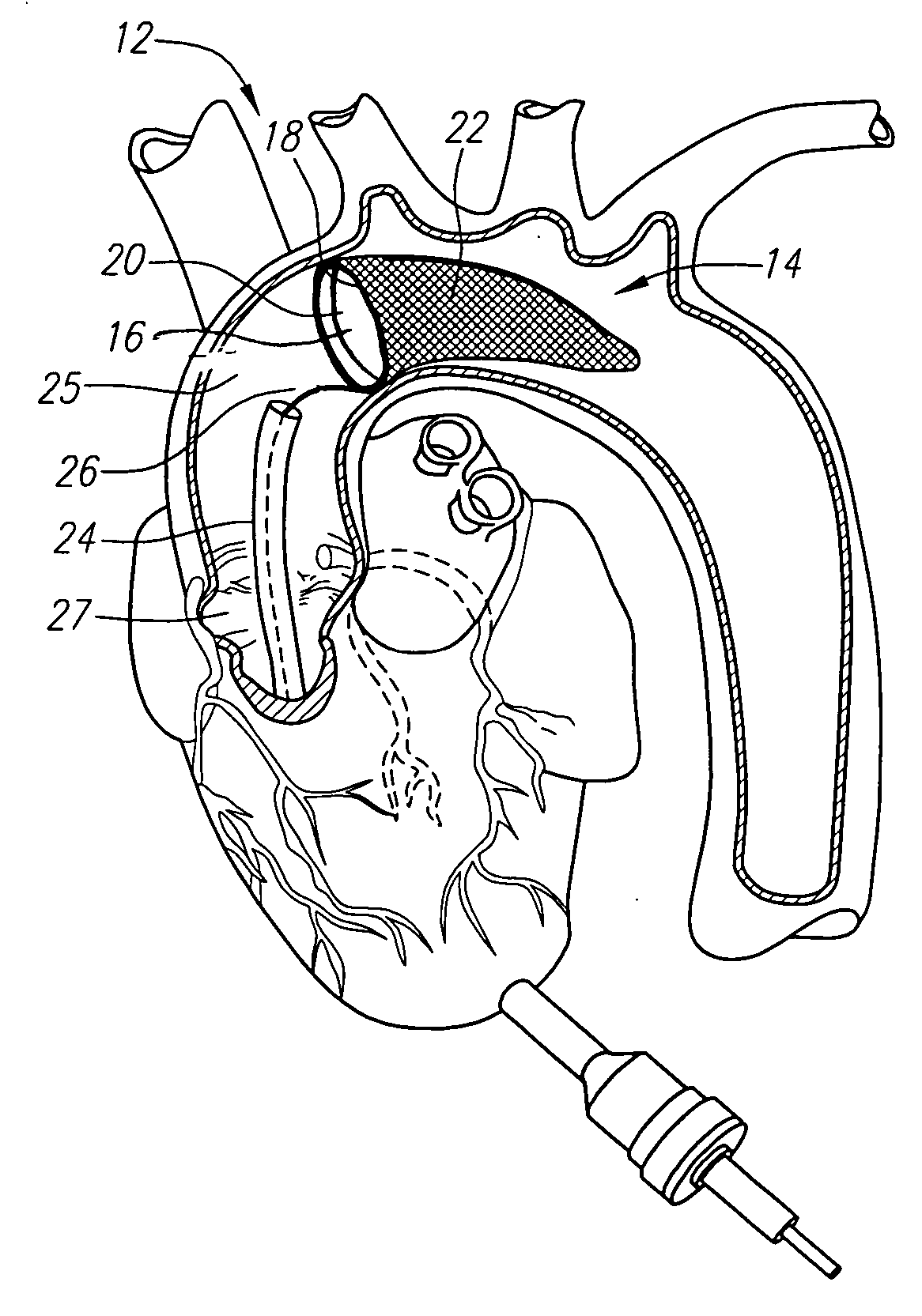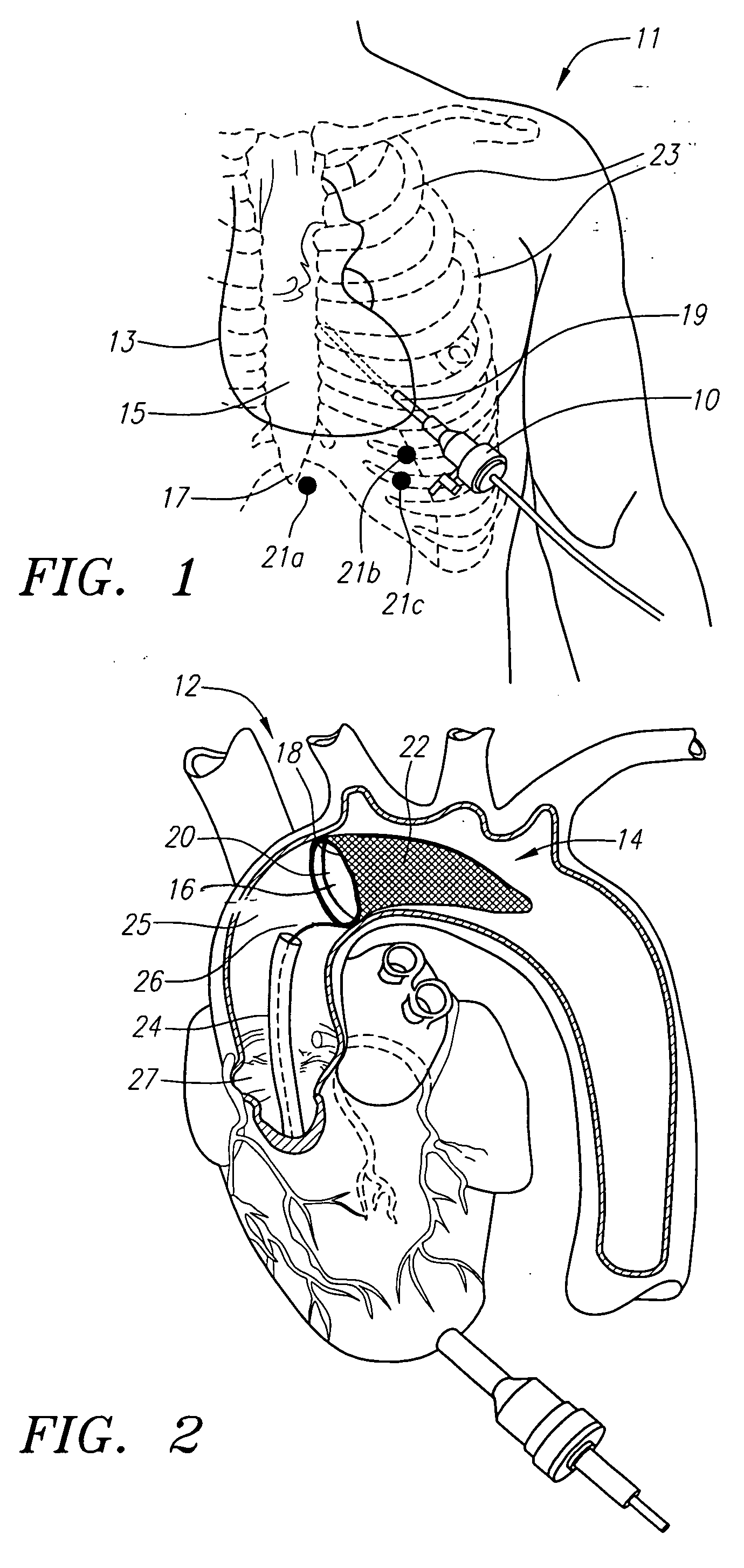Method and assembly for distal embolic protection
a technology of distal embolic protection and assembly, which is applied in the field of cardiovascular surgery, can solve the problems of long and tedious open-heart valve repair or replacement surgery, prolonged hospitalization and painful recovery period for patients, and significant trauma, and achieve the effect of reducing the retrograde flow
- Summary
- Abstract
- Description
- Claims
- Application Information
AI Technical Summary
Benefits of technology
Problems solved by technology
Method used
Image
Examples
Embodiment Construction
[0033] The advantages of performing valve repair or replacement surgery through the apical area of a patient's heart have been described in co-pending patent application Ser. No. 10 / 831,770, filed Apr. 23, 2004, which is incorporated herein by reference. The apical approach is significantly less invasive than open-chest techniques and it provides a more direct surgical approach to the valves and great vessels of the heart than the conventional minimally invasive percutaneous techniques. Moreover, because the apical approach can accommodate a larger incision and does not require maneuvering through long convolutions of the vasculature from the femoral arteries, it is not limited by the size constraints of the percutaneous techniques. Moreover, percutaneous methods may not be suitable in patients with severe atherosclerosis in which the vasculature is substantially narrowed.
[0034] The apical approach to valve replacement surgery is particularly suited for replacement of heart valves,...
PUM
 Login to View More
Login to View More Abstract
Description
Claims
Application Information
 Login to View More
Login to View More - R&D
- Intellectual Property
- Life Sciences
- Materials
- Tech Scout
- Unparalleled Data Quality
- Higher Quality Content
- 60% Fewer Hallucinations
Browse by: Latest US Patents, China's latest patents, Technical Efficacy Thesaurus, Application Domain, Technology Topic, Popular Technical Reports.
© 2025 PatSnap. All rights reserved.Legal|Privacy policy|Modern Slavery Act Transparency Statement|Sitemap|About US| Contact US: help@patsnap.com



